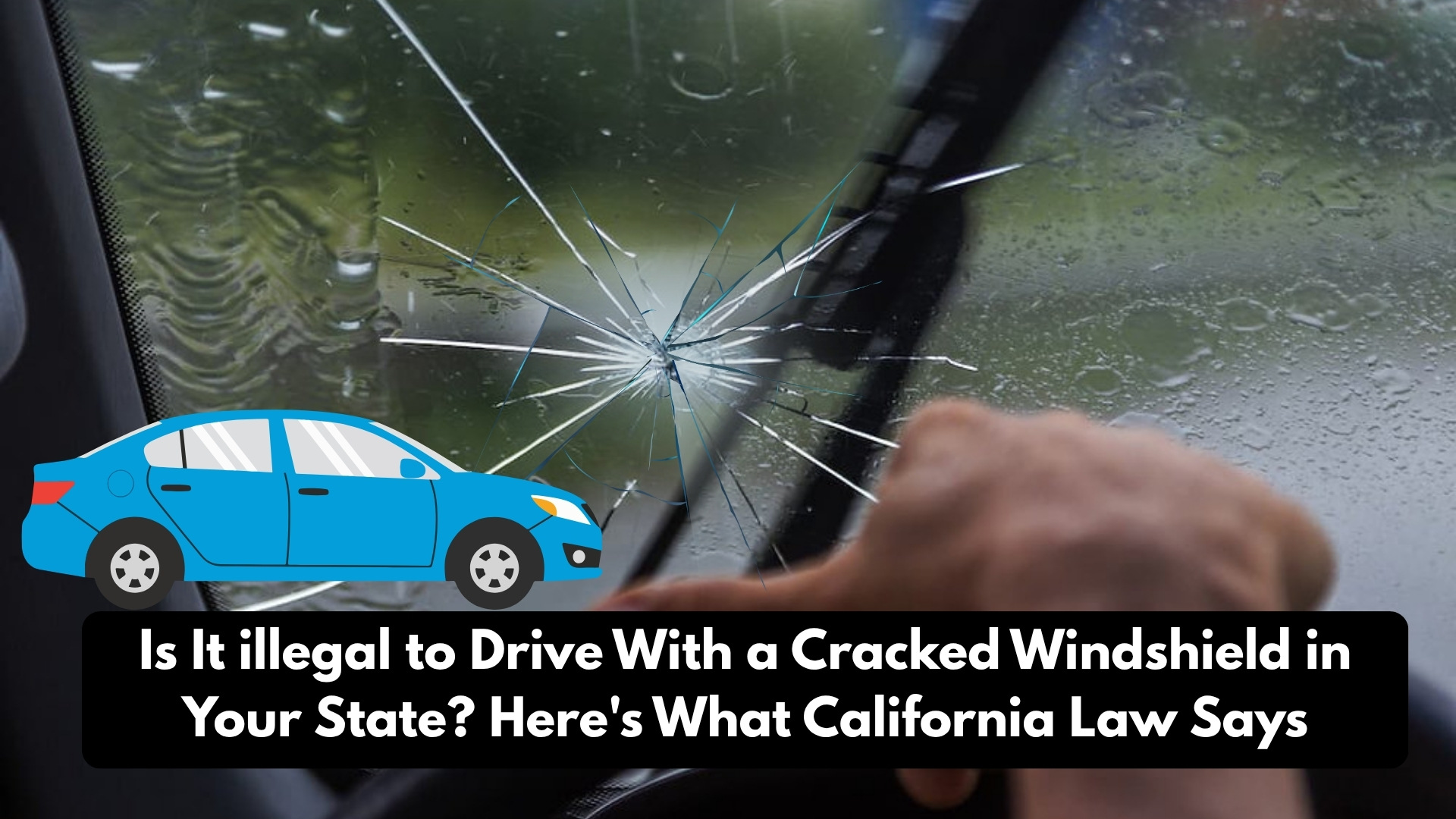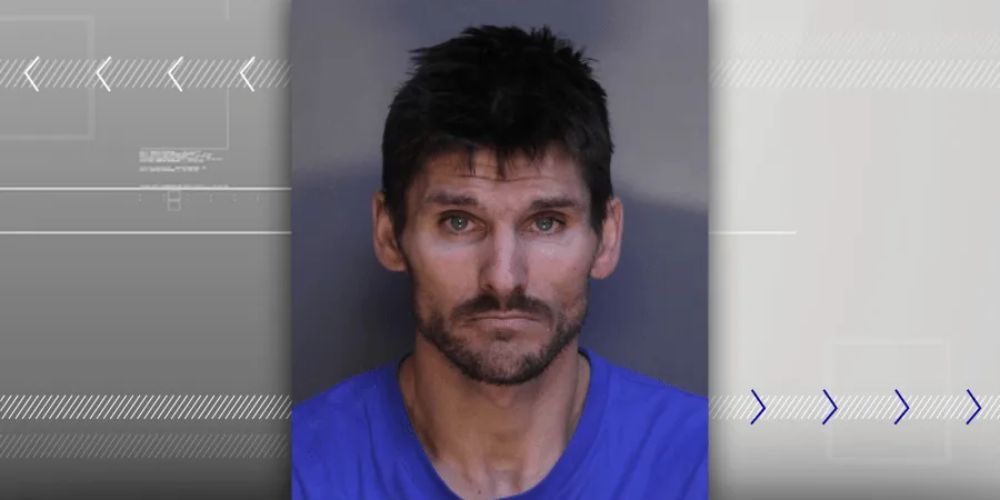California – It starts with a sudden, sharp snap—the unmistakable sound of a pebble ricocheting off your windshield on the I-5 or the 405. At first, it’s just a tiny divot, barely noticeable. But within days, fluctuating temperatures and road vibrations turn that speck into a spiderweb fracture creeping across your line of sight.
Beyond the annoyance, a cracked windshield poses a significant legal and safety question: Is it illegal to drive with a cracked windshield in California?
While many drivers treat auto glass damage as a cosmetic nuisance, California law views it as a safety hazard. This guide breaks down the specific statutes under the California Vehicle Code (CVC), the surprising statistics regarding windshield structural integrity, and what you need to do if you find yourself on the wrong side of the law.
The General Rule: Is It Illegal in “Your State”?
Before diving into California specifics, it is important to understand the federal baseline that influences state laws. The U.S. Department of Transportation (DOT) sets minimum safety standards which often serve as a reference point for local law enforcement.
Generally, in California, a windshield crack is considered illegal if:
-
It is located in the “critical area” (directly in the driver’s line of sight).
-
The crack is larger than ¾ of an inch in diameter.
-
There are multiple cracks intersecting or within 3 inches of each other.
However, state laws vary wildly on enforcement and insurance coverage. For example, states like Florida, Kentucky, and South Carolina have “zero-deductible” laws that waive your insurance deductible for windshield replacement. California, as we will see, operates differently.
Deep Dive: What California Law Says
California does not have a law that simply says, “You cannot have a crack longer than 6 inches.” Instead, the legality centers on driver vision and safety. The two primary statutes you need to know are CVC 26710 and CVC 26708.
CVC 26710: Defective Windshields
This is the primary law cited by officers during a traffic stop for damaged glass. It states:
“It is unlawful to operate any motor vehicle upon a highway when the windshield or rear window is in such a defective condition as to impair the driver’s vision either to the front or rear.”
The key phrase here is “impair the driver’s vision.” This gives law enforcement officers discretion. A small chip in the bottom passenger corner might be ignored, but a spiderweb crack at eye level is almost certainly a violation.
CVC 26708: Material Obstructing View
While CVC 26710 deals with the condition of the glass, CVC 26708 deals with obstructions on the glass. This law prohibits driving with any material that reduces the driver’s clear view of the road. While typically applied to GPS mounts or stickers, it reinforces the state’s zero-tolerance policy for anything—cracks included—that blocks the “critical zone” of visibility.
When Does a Crack Become a Violation?
Since the law relies on officer discretion, how do you know if your windshield is illegal? Generally, a crack is considered a violation in California if:
-
It crosses the driver’s line of sight: If the damage is in the area wiped by the driver-side wiper blade, it is likely illegal.
-
It creates a “star” or “spiderweb” pattern: These are more dangerous than single-line cracks because they refract light, potentially blinding a driver in sunlight or oncoming headlights.
-
It compromises the glass’s integrity: If the glass is shattered or looks like it might cave in, the vehicle is deemed unsafe under CVC 24002 (unsafe vehicle).
Penalties: The “Fix-It” Ticket and Fines
California is somewhat lenient regarding the initial penalty, focusing on compliance rather than punishment.
The 48-Hour Rule
If you are pulled over solely for a cracked windshield, you will likely be issued a correctable violation, commonly known as a “fix-it ticket.”
-
You are typically given 48 hours (or sometimes up to 30 days depending on the specific citation terms) to repair the damage.
-
Once repaired, you must have the correction signed off by an officer (such as at a CHP office) and present proof to the court.
-
If you handle it promptly, the court often dismisses the fine, leaving you with only a dismissal fee (usually around $25).
The Cost of Non-Compliance
If you ignore the ticket or fail to prove corrections were made, the penalties escalate.
-
Base Fines: Can range from roughly $197 to over $250 once court assessments and fees are added.
-
Driving Record: While a equipment violation doesn’t typically add points to your license, ignoring the ticket can lead to a “Failure to Appear,” which carries much stiffer penalties and potential license suspension.
The Safety Reality: Stats and Facts
Why is the law so strict about a piece of glass? It isn’t just about seeing the road; it’s about structural survival in a crash.
-
Roof Support: In a rollover accident, the windshield provides up to 60% of the cabin’s structural integrity. A cracked windshield may shatter prematurely, allowing the roof to collapse on the occupants.
-
Airbag Deployment: Passenger-side airbags are designed to bounce off the windshield before expanding toward the passenger. If the glass is weakened by a crack, the force of the airbag (deploying at up to 200 mph) can blow through the windshield, rendering the safety bag useless.
-
Head-On Collision Strength: Even in a standard front-end collision, the windshield contributes up to 45% of the vehicle’s structural strength against the impact.
Insurance: Does California Have “Free” Windshield Replacement?
A common myth is that windshield replacement is free in every state. This is not true for California.
Unlike Florida or South Carolina, California does not mandate zero-deductible windshield replacement.
-
Deductibles Apply: If you file a claim to replace your windshield, you will typically have to pay your comprehensive deductible (often $250 or $500).
-
Repair vs. Replace: Many insurance companies will waive the deductible for repairs (filling a small chip) to encourage you to fix it before it spreads.
-
Glass Buy-Back: Some California insurers offer a specific “glass waiver” or “full glass coverage” rider for an extra premium, which reduces the deductible to $0 for glass claims. Check your policy declarations page to see if you have this add-on.
Summary Table: California vs. Zero-Deductible States
| Feature | California | Florida / KY / SC |
|---|---|---|
| Is driving with a crack illegal? | Yes, if vision is impaired (CVC 26710) | Yes, if deemed unsafe |
| Zero-Deductible Law? | No (Deductibles apply) | Yes (Mandated by state law) |
| Citation Type | Correctable “Fix-It” Ticket | Varying citations |
| Time to Repair | 48 Hours (typical citation order) | Immediate compliance expected |
Conclusion
So, is it illegal to drive with a cracked windshield in California? The formal answer: Yes, if the damage is such that it impairs the driver’s vision or the windshield is in a defective condition under California Vehicle Code Section 26710. Whether a particular crack triggers the law depends on its size, location, severity and whether it obstructs or distorts the driver’s view. The good news is that many minor damages are repairable and the cost of compliance is likely far smaller than the cost of a ticket—or worse, a crash.
For residents of California, paying attention to windshield condition isn’t simply an optional maintenance task: it’s a matter of legality and safety. Keeping the windshield in good shape helps ensure you’re not only on the right side of the law, but also better protected on the road.











Leave a Comment